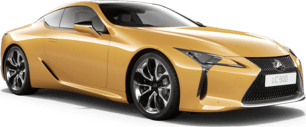The M240i xDrive’s specification reads like it’s straight out of BMW fan fiction.
Nestled within a shrunken 3 Series-derived 'CLAR' platform brandishing near-50:50 weight distribution, stuffed between beefed-up struts up front, is a strident in-line six, driving the rear or all four wheels via an M Sport differential and held up by a multi-link rear axle.
The promise here is an athletic driving machine on one hand and a cosseting grand tourer on the other, but whether the M240i can walk that fickle red line as effortlessly four years on… well, that’s what we’re here to find out. As we said earlier, sub-3.5s Teslas and the like have really messed with the bang-for-your-buck playbook since 2021.
Luckily, the reality only reiterates the 2 Series Coupe’s place in the sun. Rather than the anodyne (or artificial) whine of an electric motor, here instead is one of the greatest modern engines in the world, mated to arguably the best auto transmission ever in existence.
That’s a terrific start. And, once the button is pressed, the M240i’s performance bandwidth is deeply moving and immensely satisfying.
With a kerb weight of 1690kg, the M240i’s power to weight ratio is an impressive 168.6kW/tonne, helping it to scoot from standstill to 100km/h in 4.3 seconds, on the way to an electronically-limited top speed of 250km/h. Note that the M2 flagship is just 0.3s quicker to 100.
Pottering about town in its most benign ('Eco Pro') setting, the B58-hearted Bimmer slinks about gingerly, purring like a content tabby while skimming along over all sorts of urban roads like a luxury car costing a lot more should, taking everything in its stride. Given this is what driving is like for most people most of the time, the BMW nails it.
More throttle unleashes a surging snarl as the BMW’s speed steps up, with varying degrees of urgency according to the driver’s will and desire. Racing up through the gears, the German straight six feels like it has barely stirred; like things are just warming up.
In conjunction with Sport mode, here is where the M240i really starts to take off, leaping into action, engine roaring as speeds soar as if every road is a stretch of derestricted autobahn. The pace of this coupe is quite remarkable. Planted yet precise, the steering firms up as the chassis hunkers down, and you’re left in awe of how calm and composed the car constantly feels. Even in pouring rain.
As the roads start to snake and twist, the BMW glides through the chosen line with startling grip and confidence, without ever feeling nervous or twitchy in standard traction settings, regardless of surface or weather conditions. That’s the AWD doing its thing.
The M240i is all about nuance and control, whether you’re talking steering, handling, roadholding, braking or electronic intervention. It is refreshing to feel so connected to the driving experience so intimately.
As we said back in 2022, plonking for Sport Plus mode, with the stability and traction nannies neutered, is an easy street to big old oversteer spills and thrills, if so desired.
And then, you’re back in Eco Pro, crawling along in cocooned comfort and relying on the ADAS tech to waft you along, before being back in 'Individual' mode as the road ahead clears, with powertrain in 'Sport' but the suspension in 'Comfort'; just right for times when you just want to streak ahead of slower traffic without pummelling your spine. It’s all there for you. The M240i can do it all.
Inevitably, in Sport mode the ride’s firmness can be fatiguing on bad urban roads. Likewise, the tyre noise over coarse bitumen is tiring over longer drives. And it is all too easy to exceed the speed limit.
Earlier, we said we prefer this over the extroverted, track-focused M2, despite the latter’s astounding speed, thunderous soundtrack and tremendous dynamic capabilities, and that’s because of the M240i’s ability to deliver pleasure with everyday user-friendliness. Plus, the performance flagship is only 0.3s quicker to 100.
Maybe the latest base manual M2 might change our minds.
As it stands, on the move, the M240i is BMW in full flight, staying true to brand values but without frying your nerves or depleting your bank account too much. We love it and you should too.






